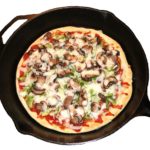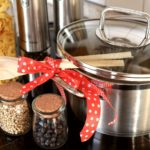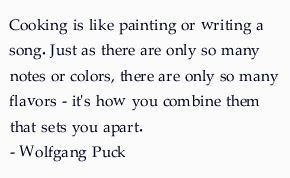So, they stick to their nonstick cookware not knowing that it just takes a little practice to get it right with stainless steel pans. The negative reviews that customers leave after having problems with their newly bought pots and pans simply reinforced this notion that nonstick is much easier to use and clean. But probe one step further and you will see that for the few complaints of stickiness, there are many others who have no problems whatsoever with their stainless steel pieces.
So, why is it that some people find it really sticky while others use it everyday as their preferred pan?
Tips For Cooking With Stainless Steel Pans
Does it surprise you that you can actually cook meat without oil in a stainless steel pan? Don’t believe me? Check this out:
So, cooking without anything sticking to the skillet can be done, even with little to no oil as the above video shows. And you can also have a little gravy to clean up the pan at the end. How is that for taste and convenience?
Below are a few tips that are useful to prevent stickiness while cooking.
Leave Your Food At Room Temperature
One of the reasons food may stick to the cooking surface is because the food is cold. If you take meat out from the fridge and immediately dump it into a frying pan, you can bet that it will stick. The cold will reduce the oil temperature and hence, sticking occurs. Similarly, if there is moisture on the food surface, it will also stick because the water will bring down the oil temperature as well.
Therefore, take your food out of the fridge earlier and let it warm to room temperature before you start your cooking. Pat it dry and release all moisture too. This will help to minimize the stickiness.
Heat Up The Pan And Oil
The oil must be sufficiently hot before you add your food. Most people would prefer to pre-heat the pan and once it reaches the right temperature, oil is then added. You may also season the pan by heating the oil until it smokes. Wipe off the excess oil once the pan has cooled down. This will result in a natural nonstick layer which prevents the surface of the pan from reacting with the food. This video below will show you how it is done:
The slight inconvenience is that you will need to re-season the pan each time you have washed it with detergent. Otherwise, just give it a wipe and your pan is ready for the next cooking session.
So, why must the oil be hot enough before you add your food? Well, the hot oil is needed to create a steam effect between the food and the pan. This layer will prevent the food from reacting to the pan and causing it to stick. The steam is from the moisture of the food which is released when the right temperature is attained.
When To Add Food
The next question then becomes when do you add food? How do you know that the oil is hot enough? This is where it takes a little trial and error.
There is no hard and fast rule of how long it takes before the oil is hot enough for food to be added because of the different skillets used. A cheap cookware like the Cook N Home Stainless Steel will definitely have a thinner construction than, say, the Calphalon Contemporary. Because of the different construction for different cookware, you will need to see what works for you. Your stove setting too may be different from others because what is medium heat for you may be medium-low for another. So, you also need to play around with your heat settings to get things right.
But generally, the timing is right to add your food when the oil spreads quickly all over the pan and starts rippling. Bear in mind that you cannot wait too long too because once the oil smokes, the temperature would be too hot for cooking and burning will result.
Some people also wonder when do you add oil to a stainless steel skillet? For that, you can do the water test. If the waters hisses and evaporates quickly, then you can add in the oil. A few will take a step further and wait for the Leidenfrost effect. This is when a water droplet moves around in the pan instead of evaporating quickly. However, this point could be too hot for some. Whatever it is, the general rule is there to follow although it might take a few tries to get things perfect.
Do Not Turn The Food Too Soon
Food will stick to the cooking surface if you try to turn it before it is ready. Given the browning process some time as the moisture in the food is released and vaporized. Your food won’t get burnt if there is still moisture in it and you can hear it sizzling. As the sizzling starts to subside, you can then try to turn your food over.
Of course, you will need to monitor the process closely. Your food will end up burnt quickly once the sizzling stops because when there is no more water content in your food, the oil temperature will rise.
Which Is The Best Stainless Steel Cookware To Buy?
If you have the money to spend, a tri-ply cookware will be a good investment. The Calphalon Tri-Ply and Cuisinart Multicald Pro are two good quality cookware that you can take a look at. Although expensive, at least, they will last you a long time, unlike cookware with nonstick coatings and they are a better option when you need to saute and sear. On the other hand, you also do not need a really expensive set like the All Clad D5 series to come up with delicious meals. Most of the time, the extra features will only give you minimal or even no additional advantage to the cooking process to justify the much higher cost.



 1
1 



Speak Your Mind